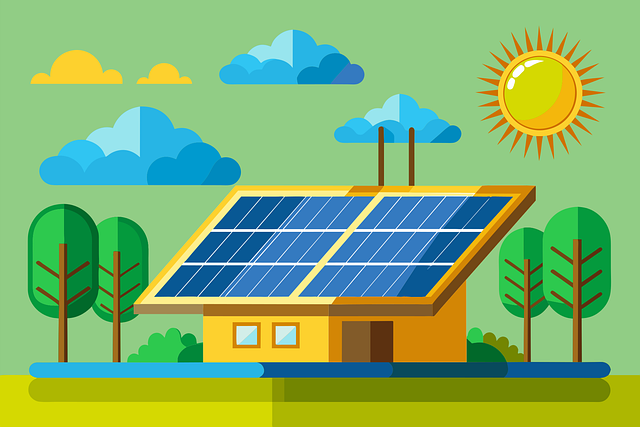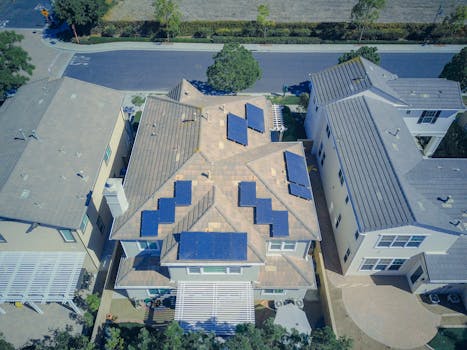“Empowering Tomorrow: Unleashing the Future of Solar Inverter Technology.”
The latest innovations in solar inverter technology are transforming the renewable energy landscape, enhancing efficiency, reliability, and integration capabilities. Advanced features such as smart grid compatibility, real-time monitoring, and improved energy conversion rates are making solar systems more accessible and effective. Innovations like microinverters and power optimizers are enabling better performance at the module level, while artificial intelligence and machine learning are optimizing energy management and predictive maintenance. These advancements not only increase the overall energy yield but also contribute to the sustainability and resilience of solar power systems, paving the way for a cleaner energy future.
Smart Solar Inverters: Enhancing Energy Management
The latest innovations in solar inverter technology have ushered in a new era of energy management, particularly through the development of smart solar inverters. These advanced devices not only convert direct current (DC) generated by solar panels into alternating current (AC) for household use but also play a pivotal role in optimizing energy consumption and enhancing the overall efficiency of solar power systems. As the demand for renewable energy sources continues to rise, the integration of smart technology into solar inverters has become increasingly essential.
One of the most significant advancements in smart solar inverters is their ability to communicate with other devices within a home energy management system. This connectivity allows for real-time monitoring and control of energy production and consumption. Homeowners can now access detailed data about their energy usage through mobile applications or web interfaces, enabling them to make informed decisions about when to use energy-intensive appliances. For instance, if a homeowner knows that their solar panels are producing excess energy during peak sunlight hours, they can schedule the operation of washing machines or electric vehicles to take advantage of this surplus, thereby reducing reliance on grid electricity and lowering utility bills.
Moreover, smart solar inverters are equipped with advanced algorithms that facilitate energy optimization. These algorithms analyze various factors, such as weather conditions, energy consumption patterns, and grid demand, to determine the most efficient way to utilize solar energy. By dynamically adjusting the output of the solar system, these inverters can maximize energy production during optimal conditions while minimizing losses during less favorable times. This capability not only enhances the efficiency of solar installations but also contributes to a more stable and reliable energy supply.
In addition to improving energy management at the household level, smart solar inverters also play a crucial role in grid stability. As more homes and businesses adopt solar energy, the integration of these systems into the existing power grid becomes increasingly complex. Smart inverters can help mitigate issues related to grid congestion and voltage fluctuations by providing grid operators with real-time data on energy production and consumption. This information allows for better coordination between distributed energy resources and the central grid, ultimately leading to a more resilient energy infrastructure.
Furthermore, the advent of smart solar inverters has paved the way for innovative features such as demand response capabilities. These inverters can automatically adjust their output in response to signals from the grid, helping to balance supply and demand during peak periods. For example, during times of high electricity demand, a smart inverter can temporarily reduce its output, thereby alleviating stress on the grid and preventing blackouts. This not only benefits the grid operators but also provides financial incentives for homeowners who participate in demand response programs.
As the technology continues to evolve, the future of smart solar inverters looks promising. Emerging trends such as artificial intelligence and machine learning are expected to further enhance their capabilities, allowing for even more sophisticated energy management solutions. With the ongoing push for sustainable energy practices and the increasing adoption of solar power, smart solar inverters are set to become an integral component of modern energy systems. By enabling homeowners to optimize their energy usage and contributing to grid stability, these innovative devices are transforming the way we harness and manage solar energy, ultimately leading us toward a more sustainable future.
Bifacial Solar Inverters: Maximizing Energy Harvesting

In the realm of solar energy, the quest for efficiency and sustainability has led to remarkable advancements in technology, particularly in the development of bifacial solar inverters. These innovative devices are designed to maximize energy harvesting by utilizing both sides of solar panels, thereby enhancing overall energy production. As the demand for renewable energy sources continues to rise, understanding the intricacies of bifacial solar inverters becomes essential for both consumers and industry professionals.
Bifacial solar panels, which are at the heart of this technology, are engineered to capture sunlight from both their front and rear surfaces. This dual-sided capability allows them to harness reflected sunlight from the ground and surrounding surfaces, significantly increasing their energy output compared to traditional monofacial panels. However, the true potential of bifacial panels can only be realized when paired with advanced bifacial solar inverters. These inverters are specifically designed to optimize the unique characteristics of bifacial technology, ensuring that the additional energy harvested from the rear side is effectively converted into usable electricity.
One of the key innovations in bifacial solar inverters is their ability to monitor and manage the energy production from both sides of the solar panels. This is achieved through sophisticated algorithms that analyze the performance of each panel in real-time. By continuously adjusting the inverter’s operation based on the varying light conditions and the amount of energy being generated from both surfaces, these inverters can maximize the overall efficiency of the solar system. This level of precision not only enhances energy output but also contributes to the longevity of the solar installation by preventing potential overloading or underutilization of the system.
Moreover, bifacial solar inverters are equipped with advanced tracking capabilities that allow them to follow the sun’s path throughout the day. This tracking technology, often referred to as solar tracking, further amplifies energy harvesting by ensuring that the panels are always positioned optimally to capture sunlight. When combined with bifacial technology, solar tracking can lead to significant increases in energy production, making these systems particularly attractive for large-scale solar farms and commercial installations.
In addition to their enhanced energy harvesting capabilities, bifacial solar inverters also contribute to the overall sustainability of solar energy systems. By maximizing energy output, these inverters help reduce the number of solar panels required to meet energy demands, thereby minimizing the environmental impact associated with manufacturing and installing additional panels. Furthermore, the increased efficiency of bifacial systems can lead to lower electricity costs for consumers, making solar energy a more viable option for a broader audience.
As the solar industry continues to evolve, the integration of bifacial technology with advanced inverter systems represents a significant step forward in the pursuit of cleaner, more efficient energy solutions. The ongoing research and development in this field promise even greater innovations in the future, potentially leading to further enhancements in energy harvesting and system performance. As more consumers and businesses recognize the benefits of bifacial solar inverters, it is likely that their adoption will accelerate, paving the way for a more sustainable energy landscape.
In conclusion, bifacial solar inverters stand at the forefront of solar technology, offering a compelling solution for maximizing energy harvesting. By leveraging the unique capabilities of bifacial panels and incorporating advanced monitoring and tracking features, these inverters not only enhance energy production but also contribute to a more sustainable future. As the solar industry continues to innovate, the role of bifacial solar inverters will undoubtedly become increasingly significant in the global transition toward renewable energy.
Wireless Communication in Solar Inverters: The Future of Connectivity
The rapid evolution of solar inverter technology has ushered in a new era of efficiency and connectivity, with wireless communication emerging as a pivotal innovation. As the demand for renewable energy sources continues to rise, the integration of wireless communication in solar inverters is transforming how these systems operate, monitor, and interact with users and the grid. This advancement not only enhances the functionality of solar inverters but also paves the way for smarter energy management solutions.
At the core of this innovation is the ability of solar inverters to communicate wirelessly with various devices, including smartphones, tablets, and computers. This connectivity allows users to monitor their solar energy production and consumption in real-time, providing valuable insights into system performance. By leveraging mobile applications, homeowners can access data on energy generation, usage patterns, and even potential issues with their solar systems. This level of transparency empowers users to make informed decisions about their energy consumption, ultimately leading to increased efficiency and cost savings.
Moreover, wireless communication facilitates seamless integration with smart home systems and the Internet of Things (IoT). As more households adopt smart technologies, the ability of solar inverters to connect with these devices becomes increasingly important. For instance, solar inverters can communicate with smart thermostats, energy storage systems, and electric vehicle chargers, optimizing energy usage based on real-time data. This interconnectedness not only enhances the overall efficiency of energy consumption but also contributes to a more sustainable lifestyle.
In addition to improving user experience, wireless communication in solar inverters plays a crucial role in enhancing grid management. As renewable energy sources become more prevalent, the need for effective grid integration becomes paramount. Wireless-enabled solar inverters can provide utilities with real-time data on energy production and consumption, allowing for better demand response and load balancing. This capability is particularly important in regions with high penetration of solar energy, where fluctuations in generation can impact grid stability. By facilitating communication between solar inverters and the grid, utilities can implement more effective strategies to manage energy distribution, ensuring a reliable power supply.
Furthermore, the incorporation of wireless communication technology enhances the maintenance and troubleshooting processes for solar inverters. Traditional systems often require on-site inspections to diagnose issues, which can be time-consuming and costly. However, with wireless connectivity, manufacturers and service providers can remotely monitor inverter performance and identify potential problems before they escalate. This proactive approach not only reduces downtime but also minimizes maintenance costs, ultimately benefiting both consumers and service providers.
As the solar industry continues to innovate, the future of wireless communication in solar inverters looks promising. Emerging technologies such as 5G and advanced data analytics are set to further enhance the capabilities of these systems. With faster data transmission speeds and improved connectivity, solar inverters will be able to process and share information more efficiently, leading to even smarter energy management solutions. Additionally, as artificial intelligence and machine learning become more integrated into energy systems, solar inverters will be able to optimize their performance autonomously, adapting to changing conditions and user preferences.
In conclusion, the integration of wireless communication in solar inverters represents a significant leap forward in the quest for efficient and sustainable energy solutions. By enhancing user experience, improving grid management, and streamlining maintenance processes, this innovation is not only shaping the future of solar technology but also contributing to a more sustainable energy landscape. As we move forward, the continued development of wireless communication capabilities will undoubtedly play a crucial role in the ongoing evolution of solar energy systems.
Energy Storage Integration: Advancements in Hybrid Solar Inverters
The landscape of solar energy is rapidly evolving, particularly with the advancements in hybrid solar inverters that integrate energy storage solutions. As the demand for renewable energy sources continues to rise, the need for efficient energy management systems has become increasingly critical. Hybrid solar inverters, which combine the functionalities of traditional inverters with energy storage capabilities, are at the forefront of this transformation. These innovative devices not only convert direct current (DC) generated by solar panels into alternating current (AC) for household use but also facilitate the storage of excess energy for later use, thereby enhancing the overall efficiency of solar energy systems.
One of the most significant advancements in hybrid solar inverter technology is the improved integration with battery storage systems. Modern hybrid inverters are designed to work seamlessly with various types of batteries, including lithium-ion and lead-acid options. This compatibility allows homeowners and businesses to choose the most suitable energy storage solution based on their specific needs and budget. Furthermore, the latest models feature sophisticated battery management systems that optimize charging and discharging cycles, ensuring that the batteries operate at peak efficiency and longevity. This not only maximizes the return on investment for solar energy systems but also contributes to a more sustainable energy ecosystem.
In addition to enhanced battery integration, the latest hybrid solar inverters are equipped with advanced monitoring and control features. These systems provide real-time data on energy production, consumption, and storage levels, allowing users to make informed decisions about their energy usage. With the help of mobile applications and web-based platforms, homeowners can monitor their solar energy systems remotely, adjusting settings and optimizing performance from anywhere. This level of control empowers users to maximize their energy independence, reducing reliance on the grid and minimizing electricity costs.
Moreover, the integration of artificial intelligence (AI) and machine learning algorithms into hybrid solar inverters is revolutionizing energy management. These technologies enable inverters to analyze historical energy usage patterns and predict future consumption trends. By doing so, they can intelligently manage energy distribution, ensuring that stored energy is utilized efficiently during peak demand periods. This predictive capability not only enhances the reliability of energy supply but also contributes to grid stability, particularly in regions where renewable energy sources are becoming more prevalent.
Another noteworthy innovation in hybrid solar inverter technology is the development of bidirectional inverters. Unlike traditional inverters that only convert DC to AC, bidirectional inverters can also convert AC back to DC, allowing for greater flexibility in energy management. This feature is particularly beneficial for users who wish to sell excess energy back to the grid or utilize it for electric vehicle (EV) charging. As the adoption of electric vehicles continues to grow, the ability to integrate EV charging with solar energy systems becomes increasingly important, and bidirectional inverters play a crucial role in this process.
In conclusion, the advancements in hybrid solar inverter technology, particularly in energy storage integration, are paving the way for a more efficient and sustainable energy future. With improved battery compatibility, advanced monitoring capabilities, AI-driven energy management, and bidirectional functionality, these innovative devices are transforming how we harness and utilize solar energy. As the technology continues to evolve, it is clear that hybrid solar inverters will play a pivotal role in the transition to a cleaner, more resilient energy landscape, empowering individuals and communities to take control of their energy needs while contributing to a more sustainable planet.
Q&A
1. **Question:** What is a key innovation in solar inverter technology that improves efficiency?
**Answer:** The development of multi-level inverters allows for higher efficiency and reduced harmonic distortion, enhancing overall energy conversion.
2. **Question:** How are smart inverters contributing to grid stability?
**Answer:** Smart inverters can communicate with the grid and adjust their output in real-time, helping to manage voltage levels and support grid stability during fluctuations.
3. **Question:** What role do energy storage systems play in modern solar inverters?
**Answer:** Many new solar inverters are integrated with energy storage systems, enabling users to store excess energy generated during the day for use during peak demand times or at night.
4. **Question:** How has the integration of artificial intelligence (AI) impacted solar inverter technology?
**Answer:** AI algorithms are being used in solar inverters for predictive maintenance, optimizing energy output, and enhancing system performance by analyzing real-time data and adjusting operations accordingly.
Conclusion
The latest innovations in solar inverter technology focus on enhancing efficiency, reliability, and integration with smart grid systems. Key advancements include the development of microinverters and power optimizers, which improve energy harvest at the module level, and the integration of artificial intelligence for predictive maintenance and performance optimization. Additionally, advancements in energy storage solutions and hybrid inverters are enabling better management of energy consumption and storage. Overall, these innovations are driving greater adoption of solar energy, improving system performance, and contributing to a more sustainable energy future.




